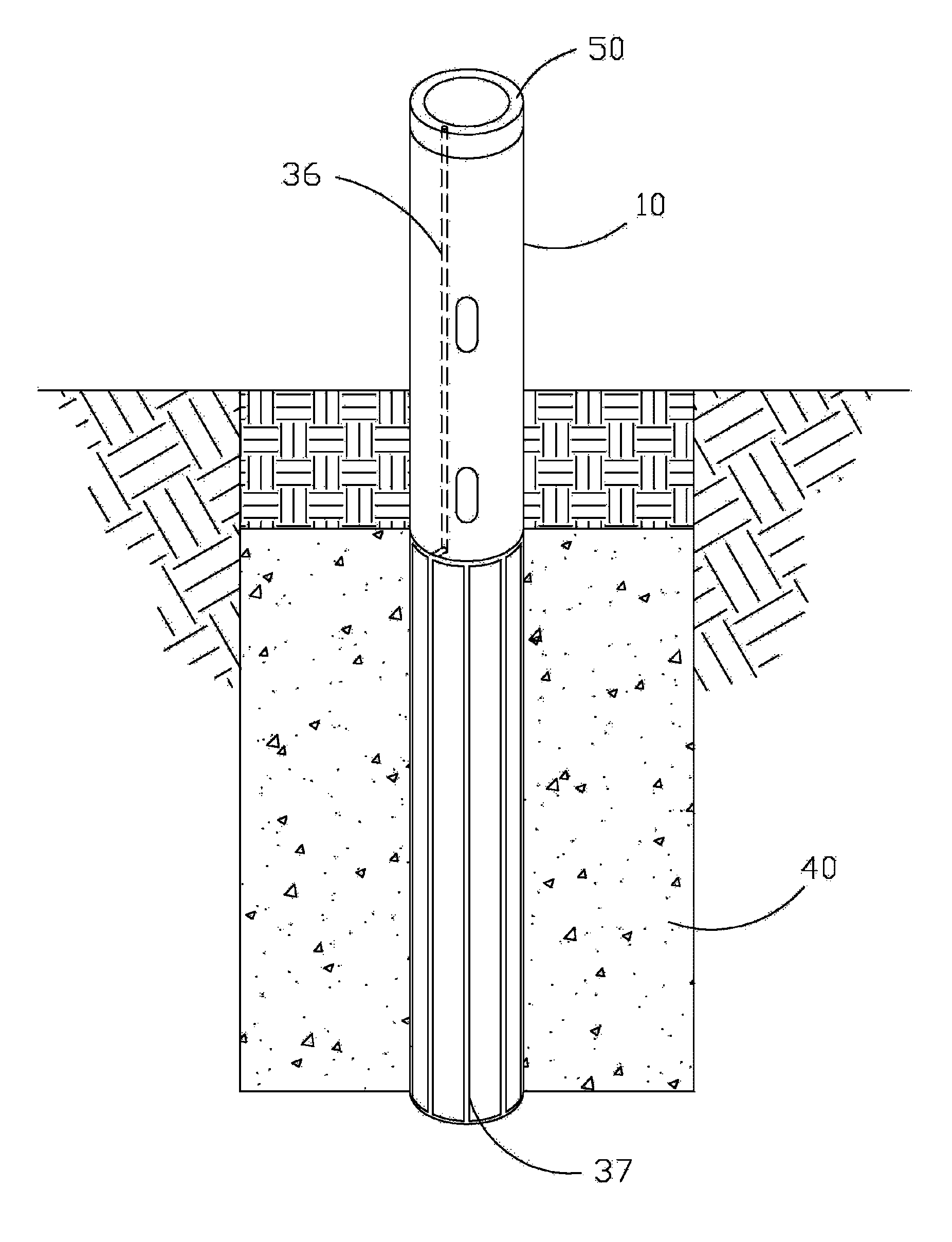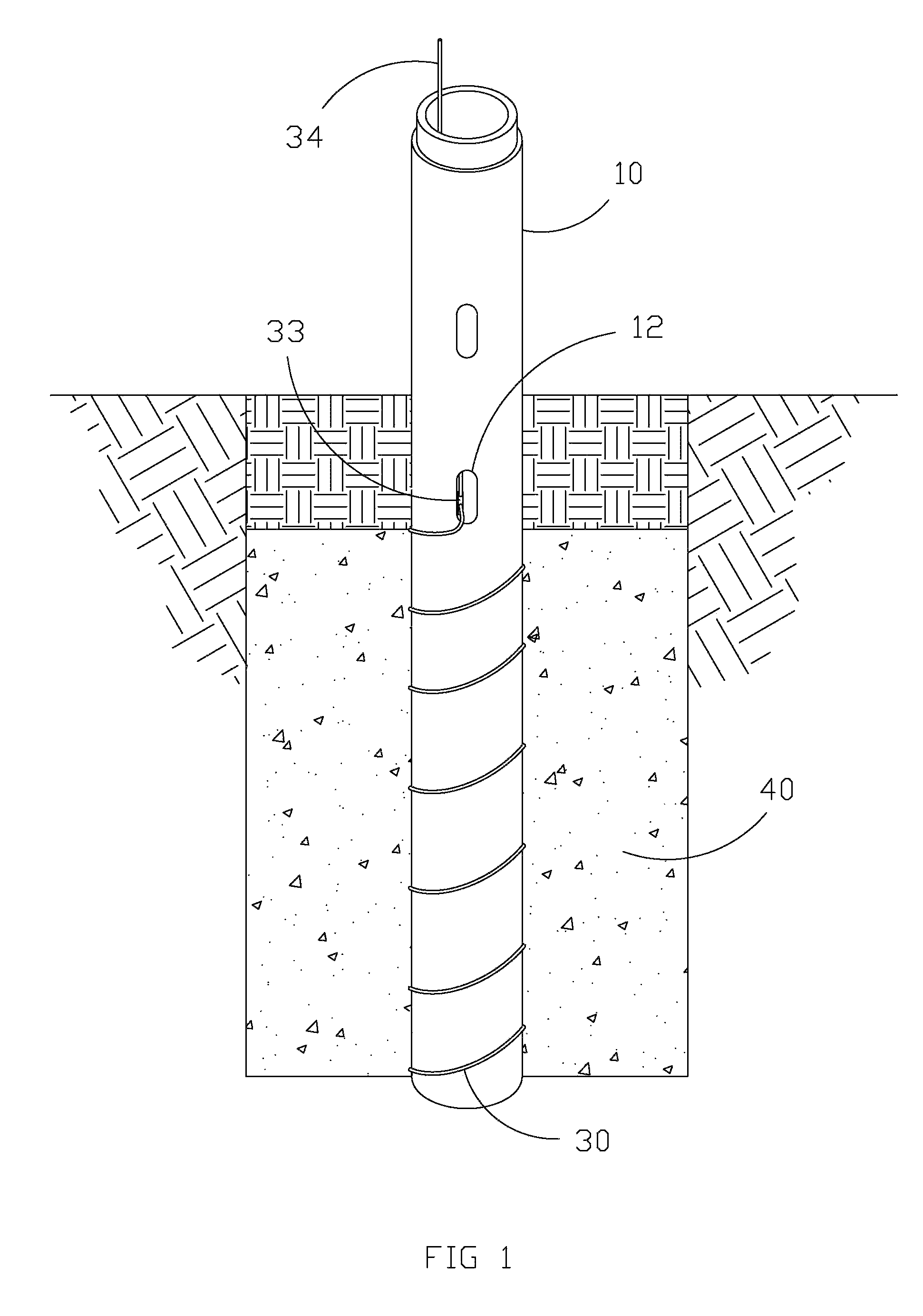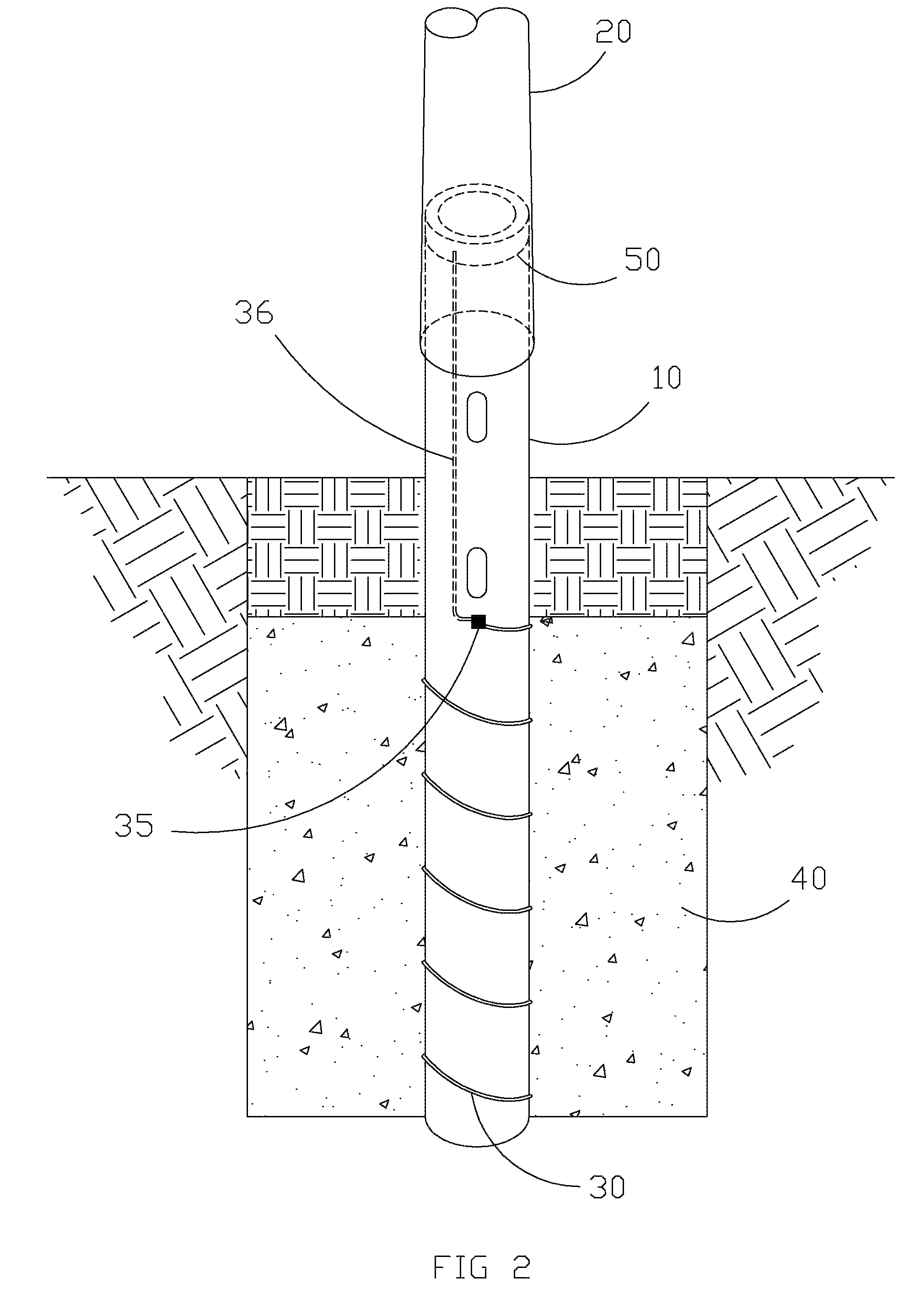Apparatus, method, and system for grounding support structures using an integrated grounding electrode
a grounding electrode and integrated technology, applied in the direction of connection contact material, cable termination, connection device connection, etc., can solve the problems of limited effect of earth grounding electrodes for outdoor light poles as well as other structures, and achieve the effect of reducing installation errors and increasing overall ease of installation
- Summary
- Abstract
- Description
- Claims
- Application Information
AI Technical Summary
Benefits of technology
Problems solved by technology
Method used
Image
Examples
embodiment 1
[0042]B. Exemplary Method and Apparatus FIG. 1
[0043]Earth ground electrode portion 30 is wound around pre-cast concrete base 10 and fed through an above-backfill access panel 12 where it terminates at an electrical junction 33; base 10 may be as is described in U.S. Pat. No. 5,398,478, incorporated herein by reference. Earth ground electrode portion 34 is connected to electrode portion 30 at junction 33. Junction 33 may comprise any manner of conductive fastening device (preferably one that is UL listed) and may further comprise a layer of corrosion protection. Earth ground electrode portion 34 runs along the inner diameter of the upper portion of base 10, extends above base 10, and attaches to the light pole (not shown).
[0044]The path to ground is completed by the following: connection made at the light pole (not shown), along earth ground electrode portion 34, across junction 33, along earth ground electrode portion 30, and dissipated into backfilled concrete 40. Alternatively, el...
embodiment 2
[0047]C. Exemplary Method and Apparatus FIG. 2
[0048]Earth ground electrode portion 30 is wound around pre-cast concrete base 10 and fed through the thickness of concrete base 10 at a connection point 35. Earth ground electrode portion 36 is connected to earth ground electrode portion 30 via connection point 35. Connection point 35 may comprise any means and methods of bonding two conductive materials (e.g., weld joint) and may further comprise a corrosion protection layer; alternatively, connection point may utilize an apparatus for joining two conductive materials such as bolt assembly 100 illustrated in FIGS. 12A and B. Earth ground electrode portion 36 is cast inside the wall of concrete base 10 and runs the remaining length of base 10 where it terminates at a conductive collar 50 which is in direct contact with a conductive light pole 20. Electrode portion 30 and lower part of base 10 is then encased in backfilled concrete 40. As illustrated, the outside diameter of collar 50 ma...
embodiment 3
[0053]D. Exemplary Method and Apparatus FIG. 3
[0054]An earth ground electrode portion 37 comprises a conductive cage embedded in the surface of pre-cast concrete base 10. Conductive cage 37 is in contact with earth ground electrode portion 36 which is cast inside the wall of concrete base 10. Earth ground electrode portion 36 runs the length of the upper portion of base 10 where it terminates at conductive collar 50 which is in direct contact with the conductive light pole (not shown). Electrode cage portion 37 is then encased in backfilled concrete 40.
[0055]The path to ground is completed by the following: the light pole (not shown), across conductive collar 50, along earth ground electrode portion 36, along earth ground electrode cage portion 37, and dissipated into the backfilled concrete 40.
[0056]Alternatively, earth grounding electrode portion 36 may continue through collar 50 to an electrical termination point on the conductive light pole (not shown) similar to Exemplary Metho...
PUM
| Property | Measurement | Unit |
|---|---|---|
| depth | aaaaa | aaaaa |
| length | aaaaa | aaaaa |
| resistance | aaaaa | aaaaa |
Abstract
Description
Claims
Application Information
 Login to View More
Login to View More - R&D
- Intellectual Property
- Life Sciences
- Materials
- Tech Scout
- Unparalleled Data Quality
- Higher Quality Content
- 60% Fewer Hallucinations
Browse by: Latest US Patents, China's latest patents, Technical Efficacy Thesaurus, Application Domain, Technology Topic, Popular Technical Reports.
© 2025 PatSnap. All rights reserved.Legal|Privacy policy|Modern Slavery Act Transparency Statement|Sitemap|About US| Contact US: help@patsnap.com



